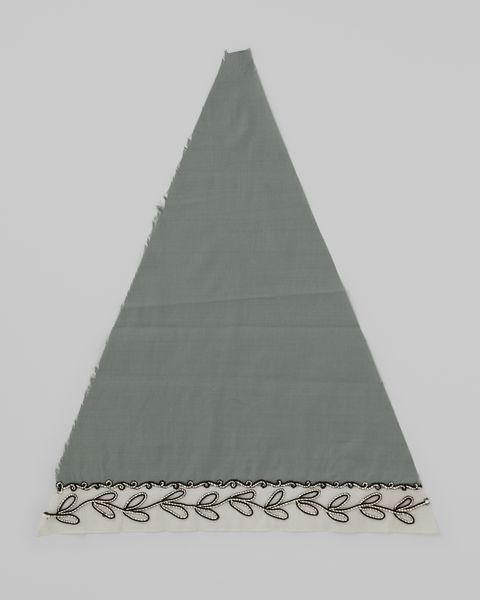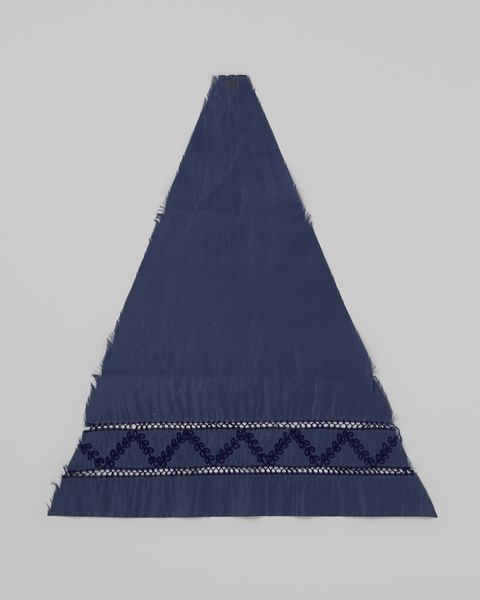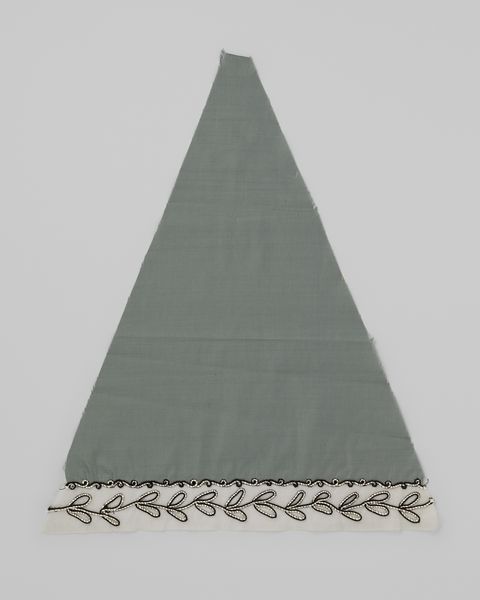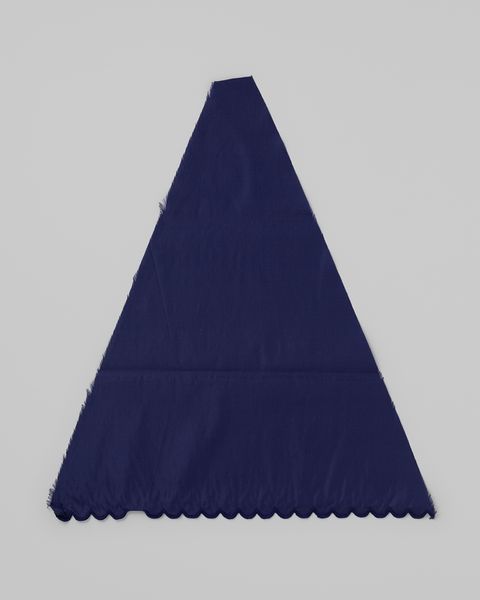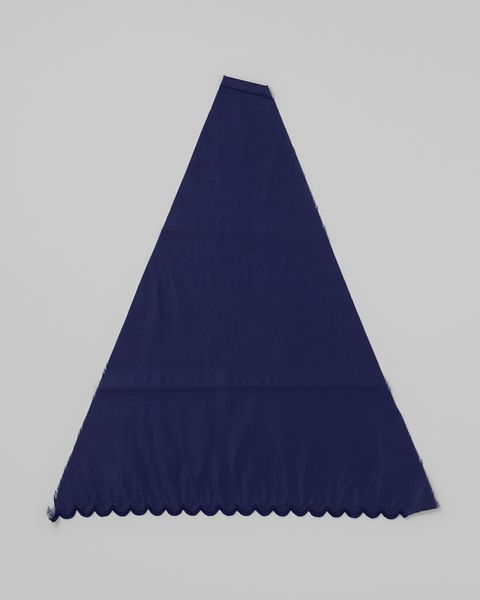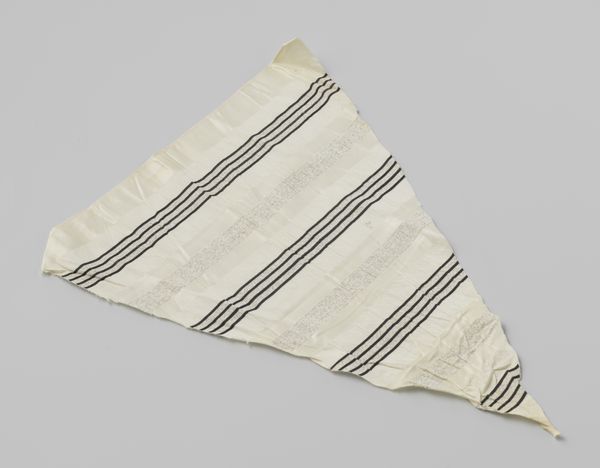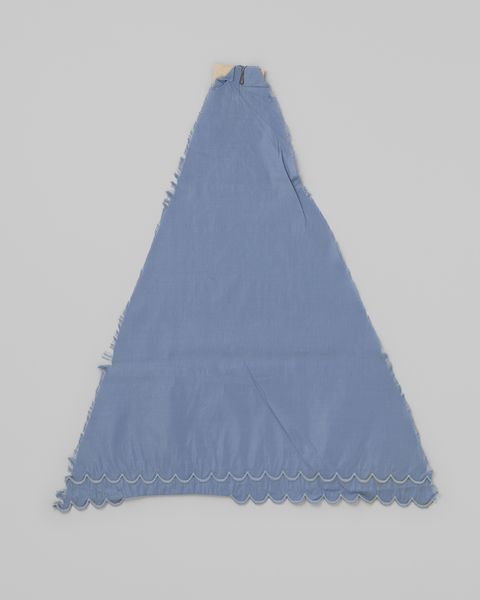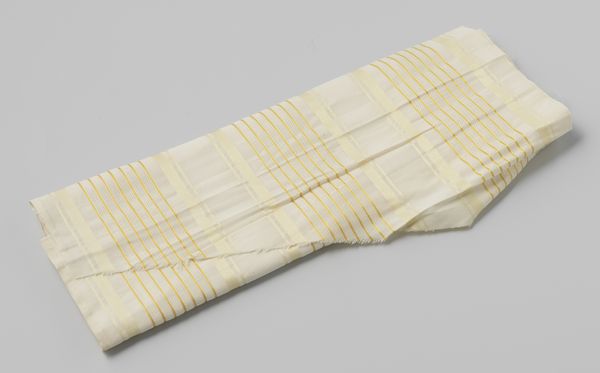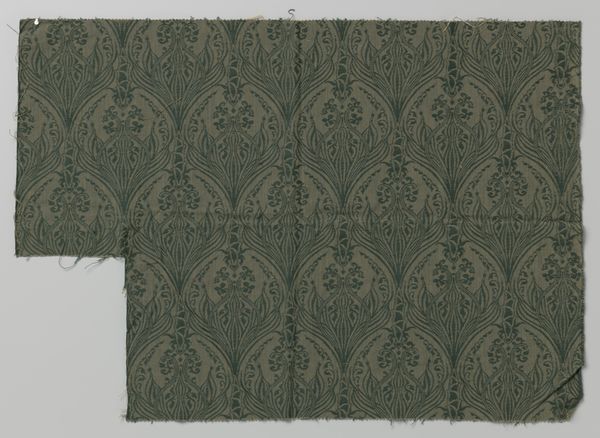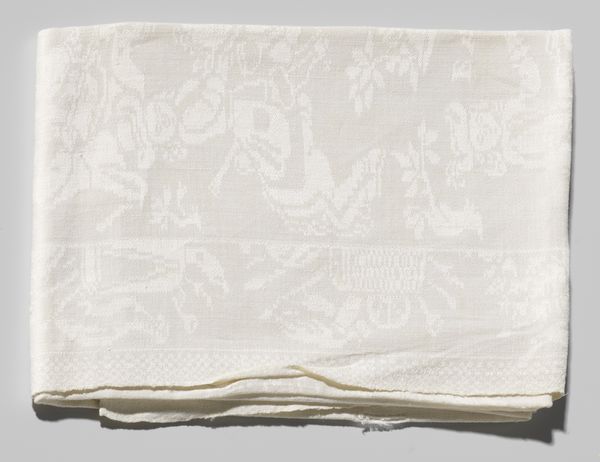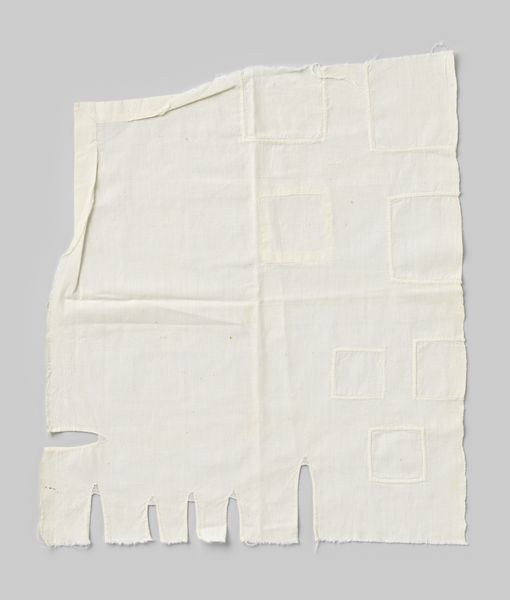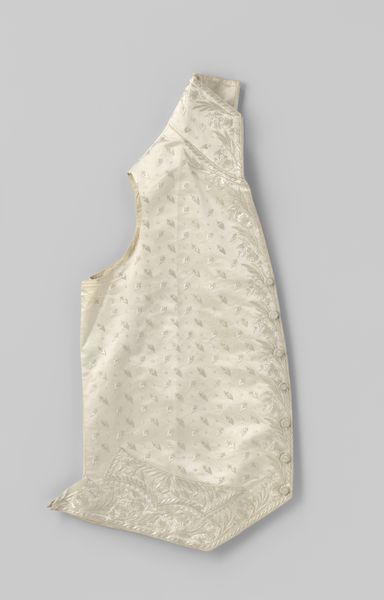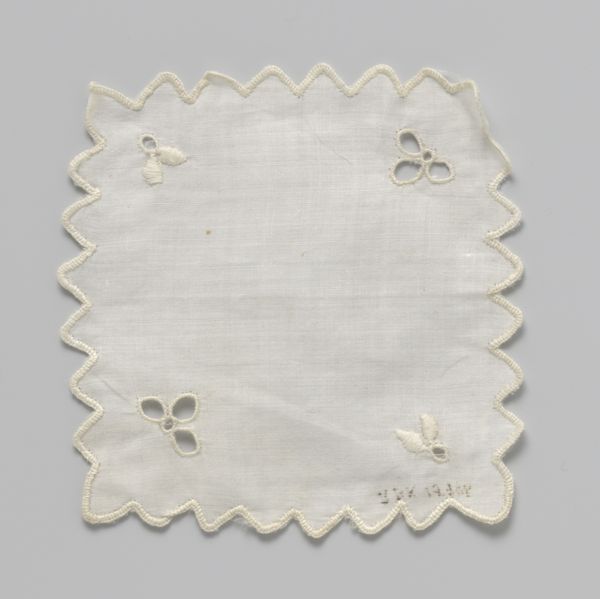
Sector van een parasoldek van lichtgroene katoen, met twee geborduurde golvende bladranken waartussen een golvende opengewerkte strook c. 1885 - 1900
0:00
0:00
weaving, textile
#
product shot
#
reduced colours
#
fashion mockup
#
arts-&-crafts-movement
#
pattern
#
weaving
#
organic colour scheme
#
textile
#
clothing promotion photography
#
clothing photography
#
designed for kid
#
clothing photo
#
artificial colours
#
design mock up
#
decorative-art
Copyright: Rijks Museum: Open Domain
Curator: This delicate fragment offers us a glimpse into late 19th-century craftsmanship. It’s a sector of a parasol cover, made of light green cotton, adorned with embroidered undulating leaf tendrils and an open-worked strip. Editor: My first impression is one of breezy elegance. That soft green and the gentle curves create such a calming and refined sensation. It feels almost like holding a piece of nature. Curator: Exactly. Its design aligns with the Arts and Crafts movement, which sought to celebrate handmade items amidst increasing industrialization. This fragment highlights the skills and artistry integral to that period's domestic sphere and textile production. The focus shifted to the value of the labor that went into it, with high artistic standards. Editor: Absolutely, and the materiality itself speaks volumes. We're looking at cotton, a globally traded commodity by the late 1800s, meticulously worked. Think of the hands involved, the division of labor possibly – from the cotton fields to the embroidery needle. It's a simple object but packed with economic and social context. I wonder who it was designed for. Curator: Well, parasols were a standard fashion accessory for women. Their primary function was protecting the skin from sun exposure, symbolizing status. But more than pure utility, this particular piece also acted as a declaration, a move against mass-produced products in favor of handcrafted pieces. Editor: And I can’t help but admire that commitment. Today, when so much is disposable, viewing an object where time, skill, and natural material converge encourages a much deeper sense of respect for not just the maker, but also the object. It's a direct response to an industrialized process, with its mass consumerism that often sacrifices these things. Curator: Yes, seeing this umbrella sector also compels us to contemplate shifting ideas surrounding feminine identity during the 1800s, where taste, artistry and class converge. Editor: When you see something made so lovingly, you immediately value its social contribution far above pure, manufactured beauty. Curator: Precisely. Its place in a museum collection is to preserve this, helping modern audiences reconsider their connection with the material world around them. Editor: Ultimately, a reminder to embrace slow-making, skilled artistry, and perhaps even mend something rather than just discarding it.
Comments
No comments
Be the first to comment and join the conversation on the ultimate creative platform.
